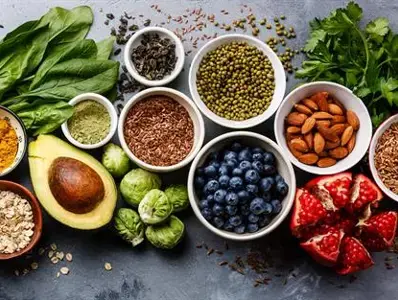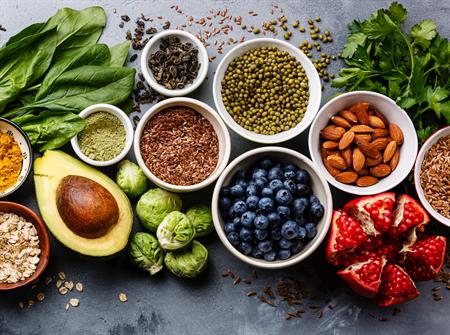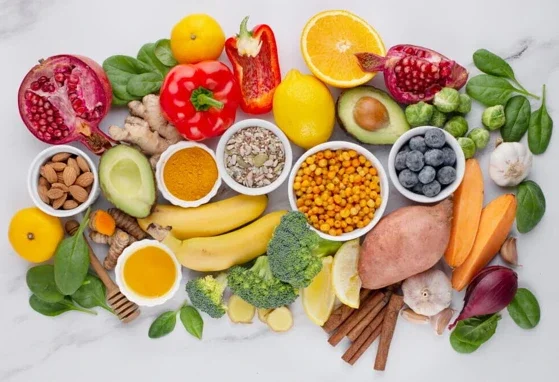Superfoods and Nutrition Trends for the 2020 Lifestyle

At the start of every New Year, the world-over, people make dramatic resolutions about their weight, health, exercise, and work/life balance. Many of us get calls from new or prospective clients to help on that New Year journey. Heading into a new decade – into 2020 – saw the world excited for a new journey.

At the start of this decade, nutritionists, dietitians and wellness experts a pace; for people to make small, positive changesto ensure happiness and good health.
While that was before COVID-19 really struck, the trends that were predicted were good. Unwittingly, many of our clients have been forced to adopt healthier attitudes as a means of survival. Globally, many have amended the way they think about food and dieting, more people are cooking and eating at home and connecting with families through food. Dr Uma Naidoo, writing for Harvard Medical Schools, this trend is “something many of us physicians and nutritionists have wanted to see more of in clients’ homes for a long time.”
Let’s have a look at some trends that we think are here to stay and how to incorporate them into our clients’ eating routines.
The most influential issues in 2019, according to research by Datassential, were heart health, energy, weight management, and gut health. They also found high-protein, vegetable-rich foods and superfoods are the most attractive to consumers. Functional foods are certainly here to stay.
Superfoods
According to Medical News Today, superfood refers to foods that offer maximum nutritional benefits for minimal calories. Packed with vitamins, minerals, and antioxidants, most superfoods are plant-based.
Due to their high nutritional density, superfoods provide a substantial amount of nutrients and very few calories. They are high in antioxidants. These help to neutralise the free radicals in our bodies that are linked with heart disease, arthritis, immune deficiency and others.
As the weather gets colder and COVID-19 continues to be a threat, you may find your clients struggling with snacking. Superfood are an excellent substitute for the usual salty or sweets food that people reach for. Incorporating these foods into clients eating plans and daily meals can really take a lot of struggle away. Crunching on a carrot or eating some colourful berries is a good way to snack – definitely better than a bag of fried chips.
Eating fruits and vegetables as part of your daily diet has strong associations with a lower risk of many lifestyle-related health conditions and overall mortality. Including superfoods is only beneficial when consuming a healthy, balanced diet overall. Eat a “super diet” rather than to concentrate on individual foods.
Remember that superfoods are not cure-all foods. Dietitian Prof. Penny Kris-Etherton from Penn State University explains: “A lot of people have unrealistic expectations about these foods, thinking they’ll be protected from chronic diseases and health problems. They may eat one or two of these nutrient-dense foods on top of a poor diet.” Work out an eating plan with your clients that are at-base healthy and balanced, and then add superfoods.
Protein
Whether your clients are vegetarian, vegan or meat-eating, protein is important and it’s time to increase protein intake. Many of our clients say by 10 am they feel peckish and need a snack. Now the American Academy of Nutrition and Dietetics says, “A bowl of cereal in the morning is a ticket to all-day snacking.” High-protein foods are great for recovery from exercise and also help to keep you full for longer since protein takes longer to digest than carbohydrates," Registered Dietitian Jenn Fillenworth says.
Plant-based meat and dairy alternatives must have the nutrition of dairy and meat-based protein to avoid creating nutrient gaps in consumer diets. According to Kerry Health and Nutrition Institute, “healthy” is a major consumer expectation of plant-based products. This can be achieved by incorporating fibre, whole-grains, fruits, and vegetables into these products. It is often a big help to clients to know what brands they should be looking for – reading labels can be daunting.
Plants are in
Plants, especially green, leafy vegetables, are an essential part of our diets. Most clients know this. What is scary, however, is how many people throw away so much of a vegetable. We cut the stalks and throwaway the wilted leaves and by the time many of us are finished ‘gutting and filleting’ our vegetables, we shouldn’t have bothered.
“The message, ‘eat your fruits and vegetables’, will never go out of style in the nutrition world,” says Cath Day, spokesperson for the Association for Dietetics in South Africa (ADSA). Fruit and vegetables are packed with vitamins, minerals, polyphenols and fibre. This makes them a nutritionally dense food option. Teach your clients that when cooking soups, stews, and pasta sauces, use everything – less wastage, more health.
Meat-based protein isn’t always an affordable option. There is nothing at all wrong with your clients getting their proteins from a plant-based diet. SA Registered Dietitian, Kelly Scholtz says: “An affordable diet in the average SA household is already very much plant-based, with small amounts of meat, chicken or fish used when possible, with beans, peas, lentils and foods like milk and eggs providing alternative and good sources of protein. For those households with more access to expensive foods, there is also likely to be more awareness of diet and nutrition trends.” Certainly as the pandemic extends and the world becomes more economically unstable, we’re likely to see more affordable options come into play.
Tips for clients
Once of the greatest things about superfoods is that they are available anywhere. You do not have to overspend or go to exclusive speciality stores to find healthy superfoods to add to your diet.
Pulses, like beans, peas, chickpeas and lentils are the perfect plant-based solution. Pulses are low fat, and high in protein and fibre, and contain iron, potassium and folate. “Teach clients how to use pulses in soups and stews, in home-made dips and snacks,” says Day.
Any leafy green vegetable or berry in a vegetable or grocery store will provide many of the same benefits as premium-priced superfoods. Replacing as many processed foods as possible with whole foods will drastically improve health. A great, interactive way to do this, and cut budget, is to plant a vegetable garden.
While your veggie patch is growing, buy your produce in season and from local sources – like your corner vegetable shop - to ensure the highest nutrient content. Do not discount the humble apple or carrot.
In conclusion
As the world moves towards the middle of the first year of a new decade, it is crucial to remember that health is holistic and incorporates not only healthy eating and good food choices, but an overall healthy lifestyle.
As health professionals, we can guide of clients into making healthy choices – for their health and for their bank balance. Social distancing and having to cook at home means that all of us can start preparing healthy meals that are nutrient rich and don’t break the bank.
In closing, Adam Drewnowski, Director of the University of Washington's Center for Public Health Nutrition, said: "By cooking more often at home, you have a better diet at no significant cost increase, while if you go out more, you have a less healthy diet at a higher cost."
If you liked this post you may also like




